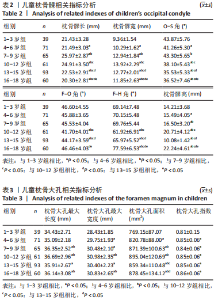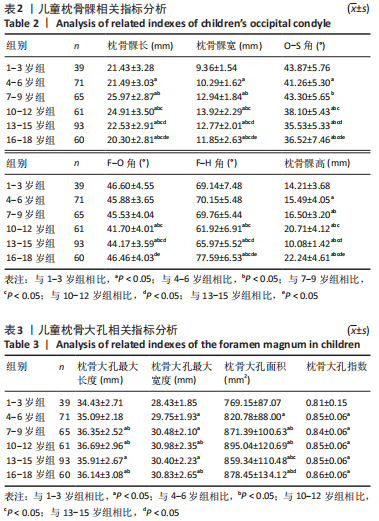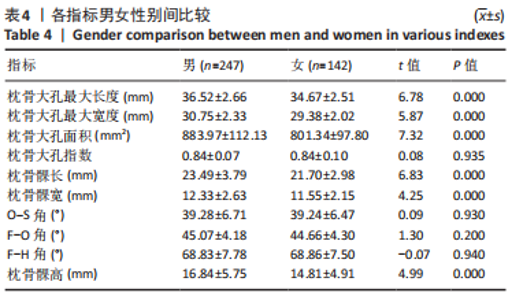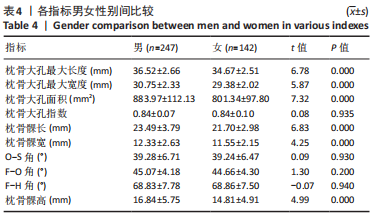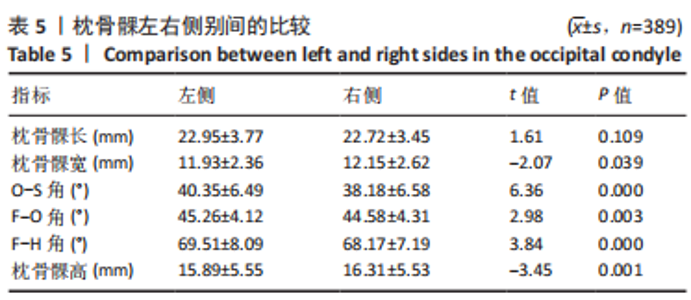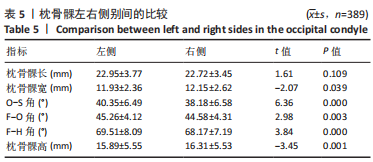[1] MENEZES AH, TRAYNELIS VC. Anatomy and biomechanics of normal craniovertebral junction (a) and biomechanics of stabilization(b). Childs Nerv Syst. 2008;24(10):1091-1100.
[2] VACCARO AR, LIM MR, LEE JY. Indications for surgery and stabilization techniques of the occipito-cervical junction. Injury. 2005;36(2):B44-B53.
[3] URIBE JS, RAMOS E, YOUSSEF AS, et al. Craniocervical fixation with occipital condyle screws: biomechanical analysis of a novel technique. Spine. 2010;35(9):931-938.
[4] VASQUEZ C, YANG A, YOUSSEF AS. Foramen Magnum Meningioma: Far Lateral Approach. J Neurol Surg B Skull Base. 2019;80(Suppl 4):S363-S364.
[5] RAGHAVENDRA BABBU YP, KANCHAN T, ATTIKU Y, et al. Sex estimation fromforamen magnum dimensions in an Indian population. J Forensic Leg Med. 2012;19(3):162-167.
[6] UTHMAN AT, AL-RAWI NH, AL-TIMIMI JF. Evaluation of foramen magnumin gender determination using helical CT scanning. Dentomaxillafac Rad. 2012;41(3):197-202.
[7] 李京,秦燕霞,刘盼盼,等.枕骨大孔的解剖学研究及其临床意义[J].中国现代医学杂志,2018,28(14):120-122.
[8] BOLZ S, GAPERT R, HARTWIG S, et al. Evaluation of foramen magnum sexual dimorphism in a modern documented German population using post-mortem computed tomography. Forensic Imaging. 2020;21:200352-200352.
[9] TONEVA D, NIKOLOVA S, HARIZANOV S, et al. Sex estimation by size and shape of foramen magnum based on CT imaging. Leg Med. 2018;35:50-60.
[10] TEIXERIA WR. Sex identifification utilizing the size of the foramen magnum. Am J Forensic Med Pathol. 1982;3(3):203-206.
[11] ROUTAL RR, PAL GP, BHAGAWAT SS, et al. Metrical studies with sexual dimorphism in foramen magnum of human crania. J Anat Soc India. 1984;2(33):85-89.
[12] LE TV, DAKWAR E, HANN S, et al. Computed tomography-based morphometric analysis of the human occipital condyle for occipital condyle-cervical fusion. J Neurosurg Spine. 2011;15(3):328-331.
[13] ALJARRAH K, PACKIRISAMY V, AL ANAZI N, et al. Morphometric analysis of foramen magnum and occipital condyle using CT images for sex determination in a Saudi Arabian population. Morphologie. 2022;106(355):260-270.
[14] KALTHUR SG, PADMASHALI S, GUPTA C, et al. Anatomic study of the occipital condyle and its surgical implications in transcondylar approach. J Craniovertebr Junction Spine. 2014;5(2):71-77.
[15] GUMUSSOY I, DUMAN SB. Morphometric analysis of occipital condyles using alternative imaging technique. Surg Radiol Anat. 2020;42(2):161-169.
[16] KIRNAZ S, GERGES MM, RUMALLA K, et al. Occipital Condyle Screw Placement in Patients with Chiari Malformation: A Radiographic Feasibility Analysis and Cadaveric Demonstration. World Neurosurg. 2020;136:470-478.
[17] Zhou J, Espinoza Orías AA, et al. CT-based morphometric analysis of the occipital condyle: focus on occipital condyle screw insertion. J Neurosurg Spine. 2016;25(5):572-579.
[18] 胡海建. 远外侧入路中枕骨髁相关解剖学参数的CT影像研究[D]. 新乡:新乡医学院,2020.
[19] MOODLEY M, RENNIE C, LAZARUS L. The Morphometry and Morphology of the Foramen Magnum In Age And Sex Determination Within The South African Black Population Utilizing Computer Tomography (CT) Scans. Int J Morphol. 2019;37(1): 251-257.
[20] GARGI V, RAVI PRAKASH SM, MALIK S. Sexual Dimorphism of Foramen Magnum between Two Different Groups of Indian Population: A CrossSectional ConeBeam Computed Tomography Study. J Foren Scie Med. 2021;4(3):150-155.
[21] 王一丹, 邬超, 关欢欢, 等. 内蒙古地区枕骨髁及枕骨大孔应用解剖三维数字化测量[J]. 解剖学报,2021,52(1):84-90.
[22] GONZÁLEZ-COLMENARES G, SANABRIA MEDINA C, ROJAS-SÁNCHEZ MP, et al. Sex estimation from skull base radiographs in a contemporary Colombian population. J Forensic Leg Med. 2019;62:77-81.
[23] MADADIN M, MENEZES RG, AL SAIF HS, et al. Morphometric analysis of foramen magnum using helical computed tomogrophy for gender determination. World J Adv Res Rev. 2020;8(3):1-6. |
